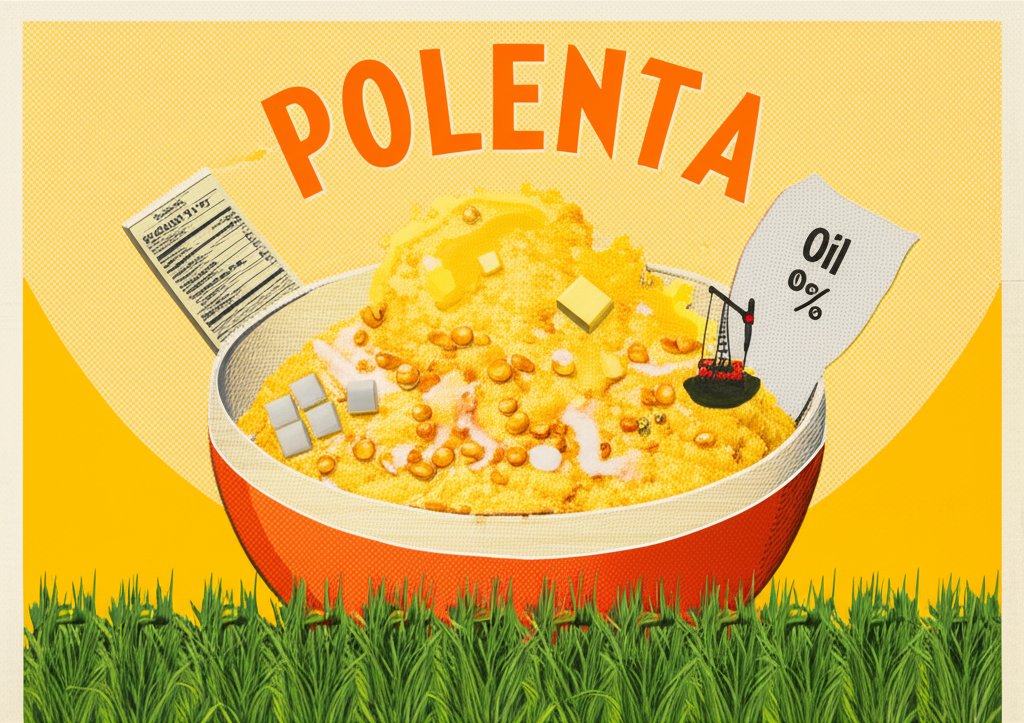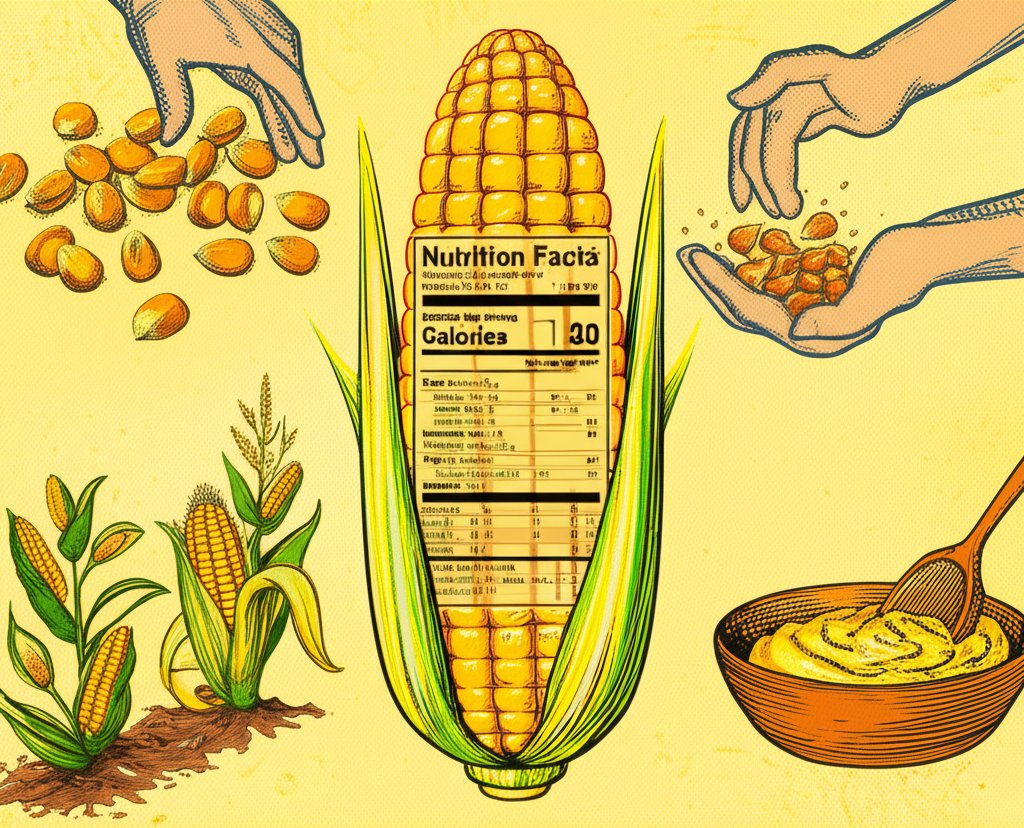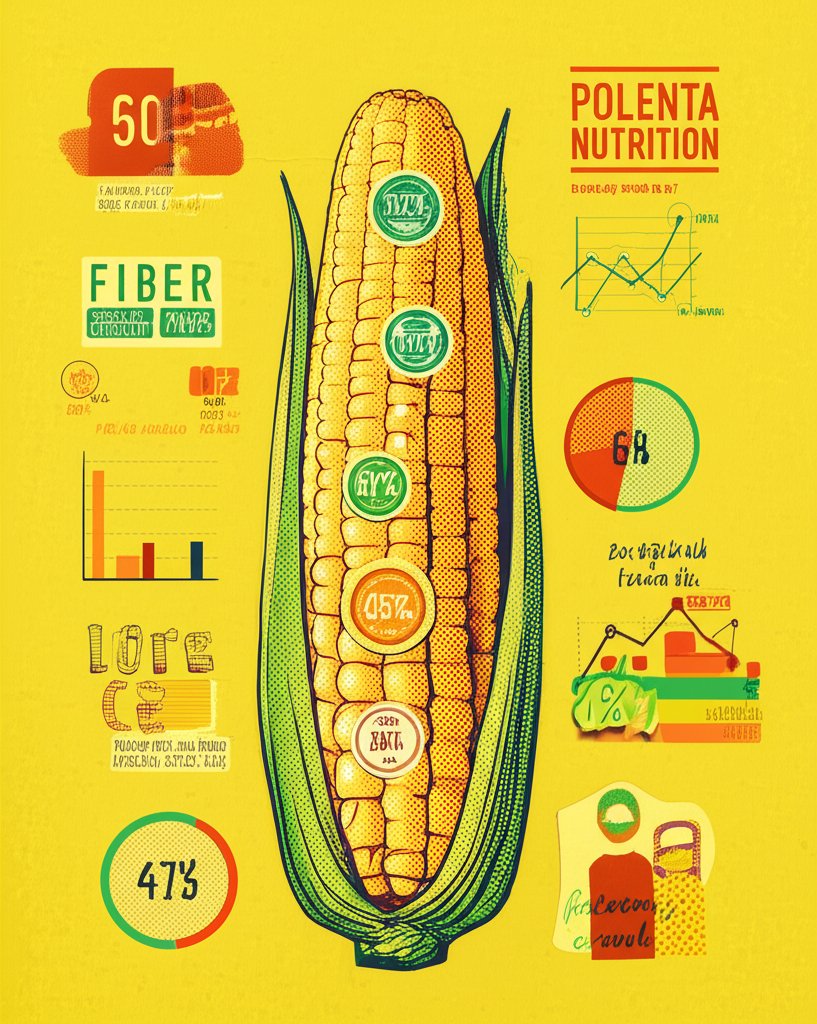Ever wondered if your healthy polenta side dish can truly offset that slice of pecan pie you’re eyeing? Understanding polenta nutrition facts is key to making informed choices—especially when balancing it with richer desserts.
At a Glance:
- Discover the nutritional profile of polenta: calories, carbs, protein, and fiber.
- Learn how different polenta preparations impact its nutritional value.
- Compare polenta to other common side dishes for a healthier plate.
- Get practical tips to maximize polenta’s health benefits and minimize potential drawbacks.
- Understand how polenta fits into a balanced diet, especially alongside treats like pecan pie.
What’s Really in Your Bowl of Polenta?
Polenta, at its core, is coarsely ground cornmeal. Its nutritional landscape, however, can shift dramatically based on preparation methods and additions. Let’s break down the baseline nutrition facts for a 1-cup serving of cooked polenta (without added butter, cheese, or cream):
- Calories: Approximately 145 calories
- Carbohydrates: Around 31 grams
- Protein: Roughly 3 grams
- Fiber: Approximately 2 grams
- Fat: Less than 1 gram
The primary nutrient here is carbohydrates. However, the type of carbohydrate is important. Polenta is relatively low on the glycemic index, meaning it doesn’t cause a rapid spike in blood sugar compared to, say, white rice or mashed potatoes. However, as you’ll see, what you add to the polenta matters a great deal.
The Impact of Preparation on Polenta’s Nutritional Value
The beauty (and potential pitfall) of polenta lies in its versatility. It’s a blank canvas ready to absorb flavors, but those flavors can significantly alter its nutritional profile.
- Adding Butter or Cream: This instantly increases the fat content, particularly saturated fat. A tablespoon of butter adds about 100 calories and 11 grams of fat.
- Cheese, Especially Parmesan: Parmesan adds both fat and sodium. A sprinkle might not seem like much, but it can quickly add up.
- Salt: While essential for flavor, excessive salt intake is a concern for many. Be mindful of how much you add.
- Vegetables: Stirring in roasted vegetables like mushrooms, peppers, or zucchini boosts the fiber and vitamin content without significantly increasing calories. This is a smart strategy.
Example: A basic polenta recipe with just water and salt is a far cry, nutritionally, from a creamy, cheesy polenta with a pat of butter.
Polenta vs. Other Common Side Dishes: A Quick Comparison

How does polenta stack up against other popular side dish options?
| Side Dish | Calories (per 1 cup) | Carbs (g) | Protein (g) | Fiber (g) |
|---|---|---|---|---|
| Polenta | 145 | 31 | 3 | 2 |
| White Rice | 205 | 45 | 4 | <1 |
| Mashed Potatoes | 237 | 33 | 3 | 2 |
| Quinoa | 222 | 39 | 8 | 5 |
| Polenta is generally lower in calories than rice or mashed potatoes, and comparable in fiber. Quinoa boasts significantly more protein and fiber, making it a nutritionally superior choice. However, polenta can be a good option if you’re looking for a lower-calorie, gluten-free alternative to some other starches. |
Strategies for Maximizing Polenta’s Health Benefits
Turning polenta into a nutritional powerhouse is all about mindful preparation.
- Go Easy on the Fat: Use broth or skim milk instead of cream for a creamy texture. If you add butter, do so sparingly.
- Load Up on Vegetables: Stir in roasted or sautéed vegetables to boost fiber and micronutrients.
- Choose Whole Grain Cornmeal: Opt for stone-ground or whole-grain cornmeal for a higher fiber content.
- Control the Salt: Use herbs and spices to enhance flavor instead of relying solely on salt.
- Portion Control: Be mindful of serving sizes, especially if you’re adding high-calorie toppings.
Practical Example: Instead of a classic cheesy polenta, try polenta with roasted vegetables and a sprinkle of nutritional yeast for a cheesy flavor without the added fat and sodium.
Avoiding Common Polenta Pitfalls

It’s easy to fall into traps that diminish polenta’s healthfulness. Here’s what to watch out for:
- Instant Polenta: Often higher in sodium and lower in fiber than traditional polenta. Check the label.
- Overcooking: While not a major nutritional concern, overcooked polenta can become gluey and less appealing, leading you to add more toppings to compensate.
- Relying on it as a Sole Source of Nutrients: Polenta is primarily a carbohydrate source. Ensure you’re getting protein, healthy fats, and a variety of vitamins and minerals from other foods in your diet.
Polenta and the Pecan Pie Paradox: Balancing Indulgence with Nutrition
Let’s face it: sometimes you want pecan pie. Understanding Dive into Pecan Pie Nutrition is the first step. Knowing that a slice packs a significant calorie punch, along with high sugar and fat content, balancing such indulgences with more nutritious choices becomes crucial.
Here’s how polenta can play a role:
- A Healthier Meal: Choose a polenta-based meal (with lean protein and vegetables) earlier in the day to offset the pie’s impact later.
- Mindful Portions: If you’re having polenta and pecan pie in the same day, reduce your portion size of both.
- Fiber Focus: The fiber in polenta (and especially in vegetables added to it) can help slow down the absorption of sugar from the pie.
- Guilt-Free Enjoyment: By making conscious choices about your overall diet, you can enjoy a treat like pecan pie without derailing your health goals.
Scenario: Instead of a heavy pasta dish before pecan pie, opt for a smaller serving of polenta with grilled chicken and broccoli.
Quick Answers: Common Questions About Polenta Nutrition
- Is polenta gluten-free? Yes, polenta is naturally gluten-free, making it a good option for those with celiac disease or gluten sensitivity.
- Is polenta healthy for weight loss? It can be, depending on how it’s prepared and portioned. A simple, vegetable-rich polenta dish is a much better choice than a creamy, cheesy one.
- Does polenta have any vitamins or minerals? Polenta provides small amounts of iron, magnesium, and B vitamins.
- Can I eat polenta every day? Yes, as part of a balanced diet. Variety is key, so don’t rely solely on polenta for your carbohydrate needs.
- Is polenta better than rice? It depends on your needs and preferences. Polenta is generally lower in calories than white rice and has a similar fiber content. Brown rice is a more nutritious option than both.
Your Actionable Playbook: Making Polenta Work for You
Ready to put this polenta knowledge into action? Here’s a quick start guide:
- Choose Your Cornmeal: Opt for stone-ground or whole-grain cornmeal whenever possible.
- Start Simple: Begin with a basic recipe using water or broth, salt, and cornmeal.
- Add Flavor Wisely: Incorporate herbs, spices, and vegetables to boost flavor and nutrients.
- Watch the Fat: Be mindful of added butter, cream, and cheese.
- Balance Your Plate: Pair polenta with lean protein and plenty of vegetables.
- Enjoy in Moderation: Practice portion control, especially when indulging in treats like pecan pie.
By understanding polenta nutrition facts, you can confidently incorporate this versatile grain into a healthy and balanced diet, even when you decide to treat yourself to a slice of pecan pie now and then.
- Bento Box Glass Offers Practical, Eco-Friendly Meal Storage - December 16, 2025
- The Best Bento Box Price For Your Perfect Packed Lunch - December 15, 2025
- Bento Box Shopping Tips for Smart and Stylish Lunch Prep - December 14, 2025










